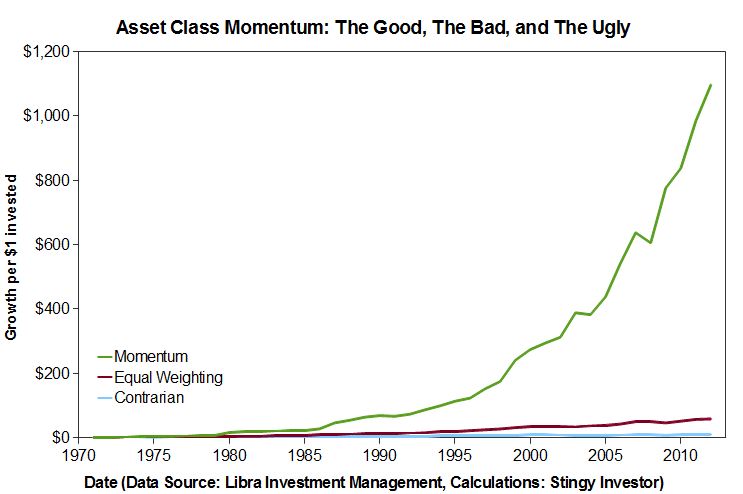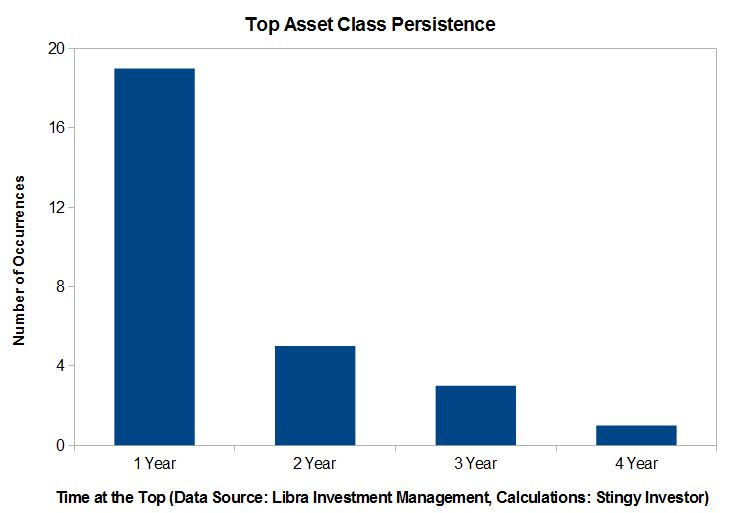The surprisingly strong case for index roulette
The financial life of a prudent index investor is purposefully
dull. You know the routine. Pick a balanced portfolio of basic low-fee
funds and ETFs, rebalance occasionally, and hope to wake up
comfortably rich one day.
Where's the spark in that? Where's the pizzazz? Where are the piles of
doubloons? To become stinking rich, you have to strap on the six
shooters and shoot for higher targets.
Cue the normal caveats: This ratchets up your risk. It is not for
everyone. It could leave you poor.
But that being said, let's take a look at a risky but potentially
profitable way to amp up the returns from index investing.
Instead of spreading your bets around, we'll examine what would have
happened over the past four decades if you had used momentum trends to
pick where to invest among six basic asset classes: three-month
Canadian treasury bills, long-term Canadian bonds, the S&P/TSX
composite, the S&P 500, international stocks (via the EAFE index), and
gold.
A sensible investor who invested equal parts of their portfolio in
each asset would have netted a handy average annual return of 10.4 per
cent since 1971. But those with more derring-do might have opted to
buy the asset class that had fared the best over the prior year. Those
brave souls would have nabbed an 18.6-per-cent average annual return.
On the other hand, contrarian investors, who bought into whatever
happened to be the worst class over the prior year, would be crying in
the poor house with returns of only 5.7 per cent a year. The path
taken by each of these investors is displayed in the accompanying
graph. (It shows results in Canadian dollars before fees are
subtracted and assumes annual rebalancing.)

[larger version]
Rather surprisingly, momentum still wins by a mile even if you exclude
any one of the six asset classes from the mix. (Mind you, ignoring
gold reduces overall returns rather substantially because gold saw
some very nice runs in the 1970s and 2000s.)
The time spent at the top of the heap is shown in the accompanying
bar chart. As you might expect, the top-performing asset class was
most often dethroned by a new one after only one year. Such periods
are collected up into the one-year category. It's the relatively high
number of two-, three-, and four-year streaks that make the momentum
strategy shine. They put momentum investors in the best asset class
about 34 per cent of the time. Even better, the largest down period
for momentum was a decline of only 5.6 per cent back in the early
1980s when it erred by moving into the S&P 500.

[larger version]
So should you unleash your inner Yosemite Sam and try to reach for
better returns using a concentrated momentum approach? It's hard to
endorse such a scheme because these methods tend to eventually blow up
like old barrels of TNT. But if you want to lean a bit in this
direction, a little birdie told me that long bonds are the place to be
in 2012.
First published in the Globe and Mail, March 10 2012.
|
|